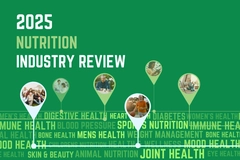FDA Proposes Limiting Omega 3 Claims for Products Without Suitable Nutrient Level

The FDA proposes to issue this rule finding that certain nutrient content claims for foods, including conventional foods and dietary supplements, that contain omega-3 fatty acids, do not meet the requirements of the Federal Food, Drug, and Cosmetic Act.
27/11/07 The Food and Drug Administration (FDA) has prepared a new docket entitled ‘Food Labeling: Nutrient Content Claims; Alpha-Linolenic Acid, Elcosapentaenoic Acid, and Docosahexaenoic Acid Omega-3 Fatty Acids’, which would prohibit the nutrient content claims for DHA, EPA and ALA, based on three notifications submitted to the agency, because they are not based on an authoritative statement that identifies a nutrient level to which the claims refer. EPA and DHA occur naturally in some fish, with higher levels in fattier fish. Many dietary supplements, particularly fish oils, contain EPA and DHA. ALA is present in some nuts and nut oils, flaxseeds and flaxseed oil, vegetable oils, and in many prepared foods that include flaxseeds, nuts, or oils as an ingredient.
In a new study, the FDA proposes to issue this rule finding that certain nutrient content claims for foods, including conventional foods and dietary supplements, that contain omega-3 fatty acids, do not meet the requirements of the Federal Food, Drug, and Cosmetic Act and may not appear in food labeling. This rule is being proposed in response to three notifications submitted to FDA under the act. One notification concerning nutrient content claims for alpha-linolenic acid (ALA), docosahexaenoic acid (DHA), and eicosapentaenoic acid (EPA) was submitted collectively by seafood processors Alaska General Seafoods, Ocean Beauty Seafoods, Inc., and Trans-Ocean Products, Inc.; a second notification concerning nutrient content claims for ALA, DHA, and EPA was submitted by Martek Biosciences Corp.; and a third notification concerning nutrient content claims for DHA and EPA was submitted by Ocean Nutrition Canada, Ltd.
FDA said it has reviewed the information included in the three notifications and is proposing to prohibit the nutrient content claims for DHA and EPA set forth in the three notifications because they are not based on an authoritative statement that identifies a nutrient level to which the claims refer, as required by the controlling statutory authority. FDA is also proposing to prohibit the nutrient content claims for ALA set forth in the seafood processors notification because they are based on a daily value that was determined by a different method than daily values already established for other nutrients. Because of the different methodology used to set the daily value, the ALA claims set forth in the seafood processors notification do not enable the public to comprehend the information provided in the claims and to understand the relative significance of such information in the context of the daily diet, as required by the controlling statutory authority. FDA is proposing to take no regulatory action with respect to the nutrient content claims for ALA set forth in the Martek notification. Therefore, if this proposed rule is finalized without change, these claims will be allowed to remain on the market.
FDA does not have data on the number of products bearing an ALA, EPA, DHA, or EPA plus DHA nutrient content claim on the label. Therefore, they are attempting to estimate a range for the number of products that may bear an affected nutrient content claim. Products whose eligibility will be affected by this rule:
Have levels of DHA greater than 32 mg.;
Have levels of EPA greater than 130 mg.;
Have levels of EPA and DHA combined of greater than 32 mg.;
Have levels of ALA greater than 130 mg and less than 160 mg for ‘‘good
source’’ or ‘‘more’’ claim; and
Have levels of ALA greater than 260 mg and less than 320 mg for ‘‘high’’
claim.
In this analysis, the FDA distinguished between levels of DHA greater than 32 mg and less than 130 mg and levels greater than 130 mg, because FDA received the notification for ‘‘high’’ claims for foods with more than 32 mg of DHA in January of 2005 and the notification for ‘‘high’’ claims for foods with more than 130 mg of DHA in January of 2004. The longer a claim has been in effect, the more likely that it is in use by manufacturers. More time allows manufacturers to integrate the label change with other packaging changes. Also, if a food is reformulated to meet claim requirements, it may take more time to test the new formulation and put it into the marketplace. In addition to label changes due to loss of claims, products that refer to the ALA daily value of 1.3 g have to alter their packaging to refer to the revised daily value of 1.6 g. FDA was not able to undertake a comprehensive review of labels in the marketplace to determine how many products currently have labels with an affected nutrient content claim. Instead, FDA went through a multi-step process to estimate the likely number of claims in the marketplace.
1. They determined which products are eligible to make a nutrient content
claim.
2. They conducted an informal review of these products in local groceries and online groceries to determine if any were making an affected nutrient content claim.
3. They determined how many labels there were in the marketplace for each of the products eligible to make an affected nutrient content claim.
4. They estimated the number of products likely to make an affected claim based on the number of products in the marketplace, the results of the informal review, and the length of time the claim had been in effect.












